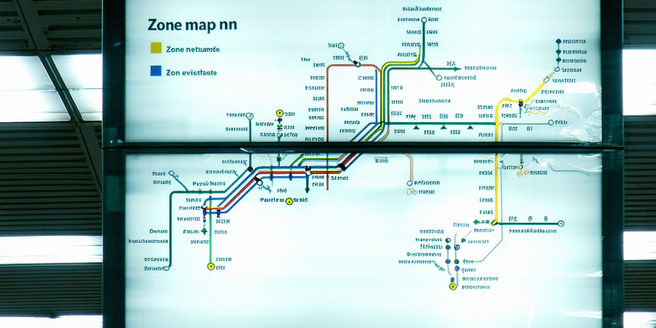Public Transport Proximity

Understanding Public Transport Zones
Public transport zones are geographic areas that determine ticket prices and service availability. These zones help transport authorities manage resources and plan efficient routes. Understanding these zones is crucial for commuters as they directly impact travel costs. Generally, cities are divided into concentric circles or sections, with zone 1 often covering the city center, and higher-numbered zones extending outward. Traveling within a single zone is usually cheaper compared to crossing multiple zones. Moreover, zones can influence housing prices, as areas located within or closer to cheaper zones often experience higher demand. Familiarity with local zone maps can help commuters optimize travel plans, ensuring they take cost-effective and efficient routes. Consequently, awareness of how zones operate can lead to significant savings and an improved commuting experience.
Benefits of Living Near Public Transport
Living close to public transport brings numerous benefits, including greater convenience, reduced commuting times, and lower transport costs. Proximity to public transport means shorter walks to transit stops, making it easier to incorporate public transport into daily routines. This can lead to reduced reliance on private vehicles, thereby saving on fuel costs and parking fees. Additionally, less time spent commuting translates to more leisure or productive time. Environmentally, residents contribute to decreased carbon emissions by opting for public over private transport. Furthermore, access to multiple transport options can increase job opportunities as commuting to distant locations becomes more feasible. Socially, living near public transport enhances connectivity, making it easier to attend social events and access community services.
Challenges of Proximity to Public Transport
While living near public transport offers many benefits, it also presents certain challenges. Noise is a primary concern, as the constant flow of buses, trains, and trams can disrupt living conditions. Noise pollution can affect sleep, work, and relaxation, impacting overall quality of life. Increased foot traffic in these areas may lead to congestion and crowding, especially during peak hours. Additionally, these neighborhoods often face higher property prices due to demand for convenient commuting options. Safety and security concerns can arise from the influx of transitory individuals unfamiliar to residents. Lastly, the hustle and bustle of transport hubs can sometimes detract from the tranquility and privacy many seek in their homes. Balancing convenience with comfort is essential for those considering such locations.
Impact on Property Values and Community
Proximity to public transport significantly affects property values and community dynamics. Homes located near major transport routes generally command higher prices due to the undeniable convenience they offer. This affordability issue may push lower-income residents further from their workplaces, creating socioeconomic disparities. Conversely, rising property values boost wealth among existing homeowners. This can alter the community’s demographic mix, potentially leading to gentrification. Infrastructure improvements around transport nodes often bring new businesses and services, enhancing community amenities. However, these changes can displace long-standing local shops and alter neighborhood character. Balancing development with community needs is crucial to preserving neighborhood identity while promoting growth. Understanding these dynamics is essential for policymakers and residents navigating the implications of public transport proximity.
Future Trends in Public Transport Accessibility
The future of public transport accessibility promises innovative solutions to meet increasing urban demands. Smart city technologies and advancements in digital infrastructure are enhancing real-time travel information, making public transport more user-friendly. Emerging trends such as on-demand transit services are set to revolutionize accessibility by tailoring routes in response to commuter requirements. Integration of cycling and pedestrian pathways with existing networks is also gaining traction, encouraging sustainable, multimodal commuting patterns. Furthermore, expanding coverage into underserved areas can promote social equity. Investment in green transit options like electric buses and rail is crucial to environmental sustainability. Transport-oriented development (TOD) projects, which integrate housing, work, and leisure spaces, reflect a shift towards creating compact, walkable communities centered around public transport nodes.